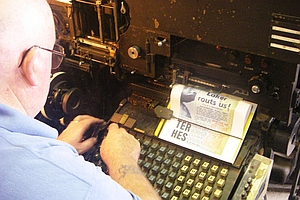
CLICK HERE
for the short 2005 video clip of
THE LINOTYPE MACHINE IN ACTION
including blow-by-blow description.
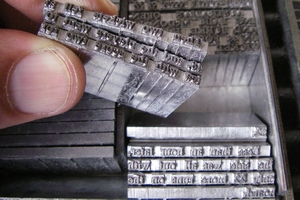
|
|
|
 |
CLICK HERE |
 |
THIS PAGE IS NOW DECOMISSIONEDPLEASE SEE THE "REBUILDING" PAGE FOR NEWS AS AT 15 AUGUST 2020Don't leave without seeing the MMOP FLOOR PLANS at the foot of this page.
|
|
That was the plan, for some years, but Michael admits he was a bit shy to talk about his own contributions and ask for help from people who did not know him. What few he did speak to, from industry or philanthropy, did not make any positive response. And government bodies always had some reason not to consider MMOP. And apparently unconcerned whether it disappeared or not. Michael Isaachsen continues:It would have been better if I had engaged the help of others to make contact with potential funding sources. That's what needs to happen now. (Unless you, dear reader, are a funding source!) Now I must ask you, friends of the Museum, to do your best to find sponsorship, grants and or loan funding (or a 'blend'). You may not be aware, but someone among your acquaintances may know a person who would be willing andd able to help if only they knew about MMOP, its history and its challenges and its potential. It's not only "print people" who value the preservation of knowledge and artefacts. Printing has in some way benefited every branch of knowledge and endeavour. There may even be some people who would be moved to support, when they learn of my own efforts and commitment over forty years since 1977. My family and I have reached the end of our own finance - we have no more to give and cannot borrow any more, ourselves. And my family stand to lose all their assets including the house - they shared with me an expectation that industry, government and philanthropy would come on board. I am not asking you to negotiate, but to tell someone who might help that it's important for the community, and that I can show them how it will become self-supporting and able to pay its way. Please break the ice, introduce me to someone I would not otherwise get to talk to. It could be a sponsor, donor or lending organisation. For the ideal result, the funds I am seeking will cover fixed expenses (mainly wages and rent) over a start-up period as well as rent from around 2016. The start-up period (to achieve break-even) could be three to five years. As a lesser outcome, if sponsorship or a grant can at least cover the rental (from 2016 and going forward), then the collection is out of danger. Beyond the rental, even modest funding will allow MMOP to begin creating value and cash-flow. A potential sponsor would be more likely to cover ongoing costs if a kindly grant could cover the overdue. GOVERNANCEIt is relevant, here, to mention the "Corporate" plans. An initial tranche of funds will be requested, to cover legal advice. An experienced NFP firm will set up the two planned bodies to manage the Museum and its assets. The Museum will become an incorporated association, and the MMOP Foundation Inc will be set up to own the heritage assets and manage all donations and loan funds. Both will qualify for "DGR Status", so permitting tax deductions by donors. The Foundation will consist of a small team of legal, accounting and professional people who are not involved in MMOP management. The two bodies' constitutions will be linked so the Foundation can oversight the management of the Museum and its Committee. A key role will be to ensure that any loan obligations are fully complied with. It is my belief that a core team of up to six staff will give the ideal outcome, recruited over the first two years and taking the Museum to full-time operation, great services and substantial revenues. SEVERAL MILLION DOLLARSThe Age, in its 31 March story mentions: "Isaachsen is making an 11th-hour appeal for a loan of several million dollars over five years". I note that this is not the only option, as mentioned above. If the MMOP Foundation could own the building, but need to borrow for start-up expenses, around two million (expended over three to five years) would cover full-time staff and other fixed expenses until break-even. A lesser loan could be viable but delay the break-even. If the start-up funds were in the form of sponsorship or a grant, a lesser amount would be satisfactory. If MMOP must continue to pay rent, and needs to borrow, then up to three million would be preferable to ensure the ability to get up to profitable levels and commence repayments in reasonable time. This is all covered in the MMOP business plans and budget. THE TEAM IS ESSENTIALThe team wages will be the largest item within fixed expenditure, and the team's efforts will be responsible for most of the revenue, as they will deliver the core programs and the marketing efforts. Volunteers will continue to play a part, and the team's duties include supporting the volunteers. The volunteers, trained and encouraged by the team, will play the major role in cataloguing and curatorial work on the thousands of books, artefacts, typefaces, spare parts and machinery. It is also likely that among the volunteers will be some who can impart relevant knowledge to the Team - a two-way street. The most critical role for the team, a role which might not work so well with a smaller team, is to form an ongoing human-based store of knowledge about the main focus of the Museum. That is, the craft and business of printing and related industries, including the Ancient Crafts of typefounding, typesetting, printing by hand, and bookbinding. They will of course offer training to the MMOP volunteers, and they will host volunteers from other museums who no longer have people with relevant experience. ARCHIVES AND LIBRARIESI have been advised by many people who visit casually that a lot of our 'archival material' is of little value and it should not take up floor space. But others, including members of professional bodies, advise me that such material is of value for research. I know that archives cannot generate much cash-flow, if any. And archives must have knowledgeable staff available. Accordingly I believe that it could not survive and be accessible except as part of a large, relevant, organisation. In a way, our 'type foundry' is like that. Using the Monotype system, it makes and supplies founts of movable type for universities, museums (including MMOP) and small printeries, and it can also compose type from a keyboard, e.g. for a book. At likely volumes the foundry would not survive as an independent operation. And when it is again operational, it will provide a captivating experience for many visitors. The Monotype was the major system of typesetting for publishers of quality books and journals. That's about it. Please email me for any further information (in either direction!) Michael. planning@mmop.org.au | ||
| ||
OTHER MEDIA COVERAGETwo Printing Industry trade publications (on-line) have featured MMOP in recent weeks, and have attracted comments. Some comments were supportive and some dismissive. Articles in Print21.com.au were written by printing guru James Cryer. Articles in Proprint.com.au were written by hard-working journalist Sarah Simpkins.Appreciating that the commenters were not in possession of all the facts, Michael has made lengthy statements in reply, attracting more comments. Where will it end?
|
|
The Showroom is the entrance hall of MMOP. This room displays examples of various kinds of machines and other items found throughout the Museum. The SHOWROOM WEB-PAGE GROUP also serves as a showroom to other parts of the Museum. THERE ARE MANY PICTURES and every picture has an explanation.
INTERESTING: The film and TV industry has noticed MMOP and used the Museum as a filming location several times and at other times picked up a truckload of machines and other things to use on their set elsewhere. Twice in recent times the MMOP "Newspaper Linotype Composing Room" has been used for TV. Here's one of the episodes taking place. 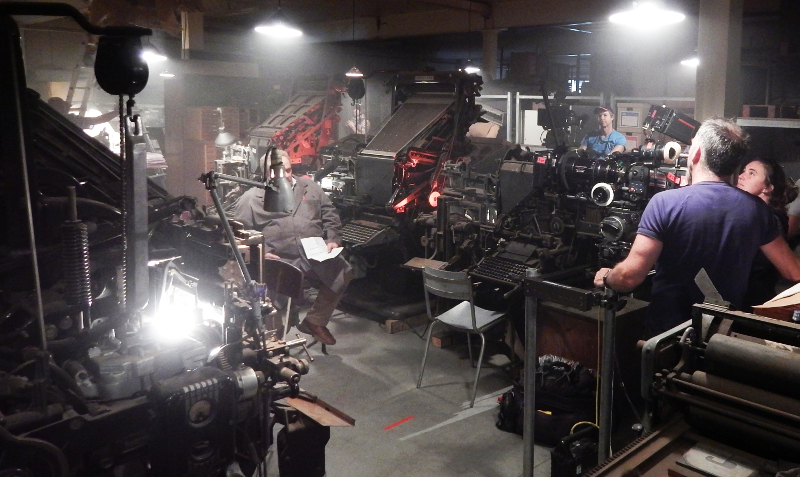
. | ||
|
To visualise the Melbourne Museum of Printing, these floor plans show how the 33,000 square-foot building (3000 sq.m) is planned to be set out. These two files can be printed out up to A2 size. 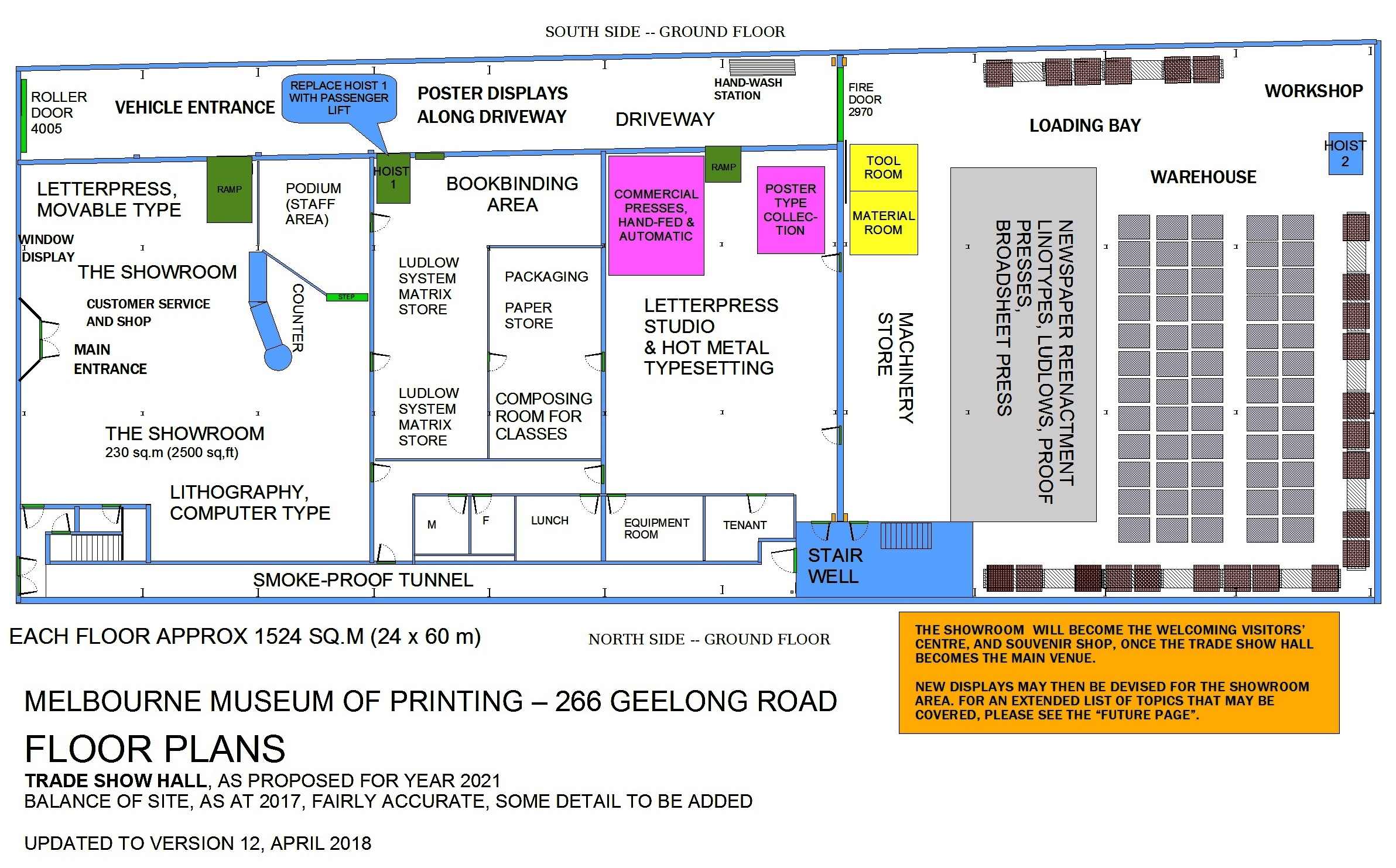
. 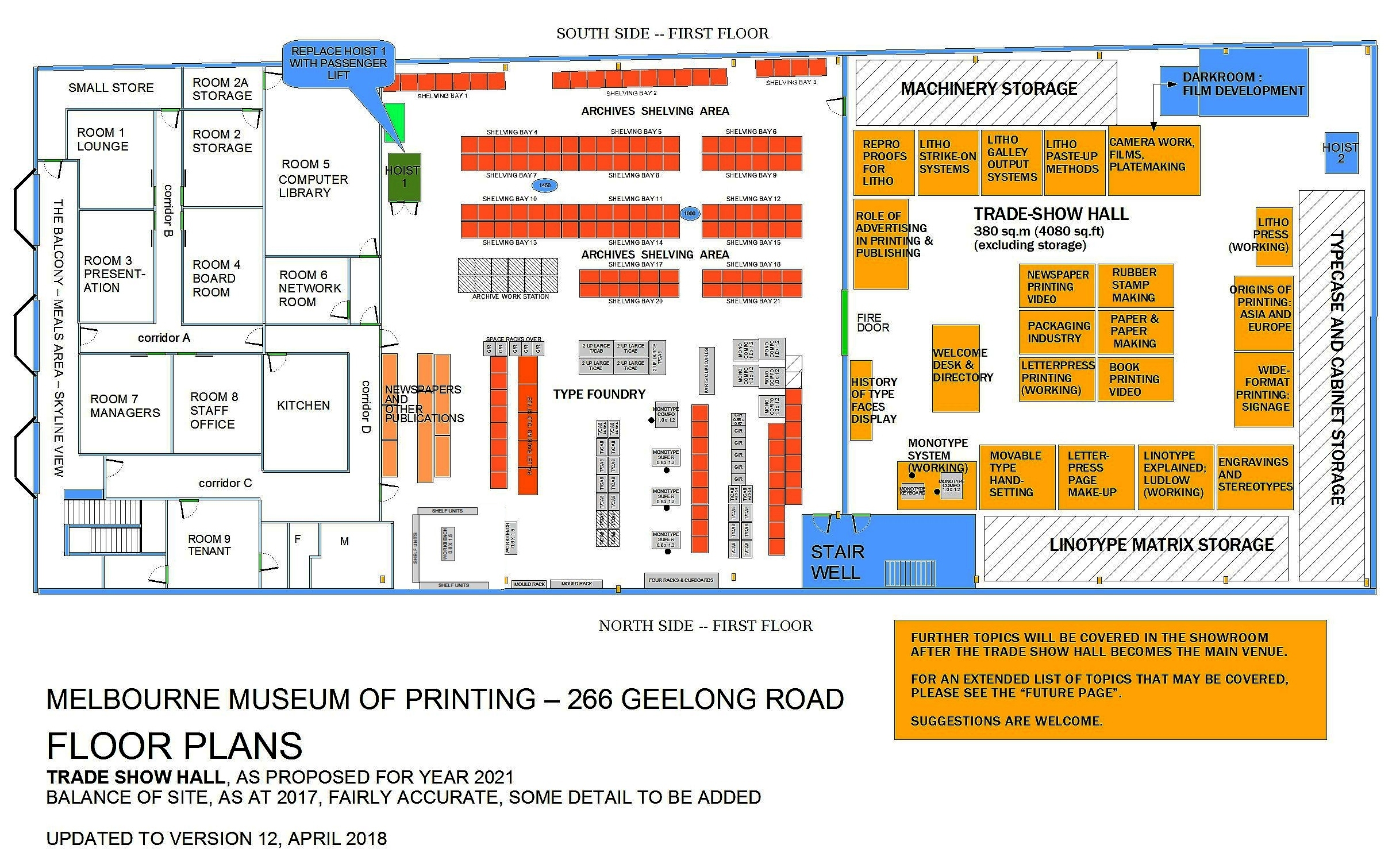
| ||
|
CLICK HERE FOR mmop future PAGES See the full range of possibilities, and links to some great referees and blogs. . CLICK HERE FOR SHOWROOM PAGES MMOP Home Page |